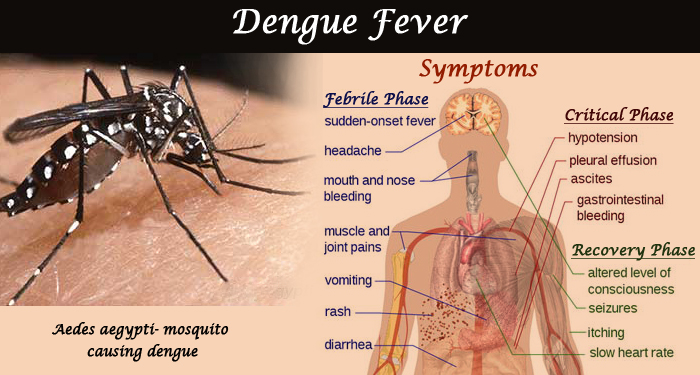The World Health Organisation (WHO) estimates Dengue fever as the most important mosquito-borne viral disease affecting humans. However in Nigeria it is under-reported and often misdiagnosed.
According to Dr Balarabe Adamu Isah of the Department of Community Medicine, Usmanu Danfodiyo University Teaching Hospital (UDUTH), though the first isolated case of dengue in Nigeria was in the 1960s, dengue is not a reportable disease in the country with most cases often undiagnosed, misdiagnosed as malaria or referred to as fever of unknown origin.
He said: “Studies carried out among febrile Nigerian children in 2013, detected dengue seroprevalence of 30.8%. Another study in the North among healthy children in 2014 revealed a seroprevalence of 17.2%. A recent survey of dengue antibodies in Ibadan showed a seroprevalence of 73% among febrile patients aged 4 – 82 years. However, the disease is neglected, under recognised and under reported in Nigeria.”
Medical experts have harped on the need to promote Dengue fever as a priority among health officials and the general public. At a recent public awareness programme by the UDUTH Sokoto, the medical practitioners spoke extensively on the disease.
The mosquito-borne disease is caused by the Dengue virus and has been classified as a re-emerging infectious disease. It is characterised by fever, severe headache, backache, joint pains, nausea and vomiting, eye pain and rash, and haemorrhagic manifestations.
Dr Isah said the most common epidemic vector of dengue in the world was the aedes aegypti mosquito and that it could be identified by the white bands or scale patterns on its legs and thorax.
“The aedes aegypti mosquito lives in urban habitats and breeds mostly in man-made containers. Unlike other mosquitoes aedes aegypti is a day-time feeder; its peak biting periods are early in the morning and in the evening before dusk,” he said.
The community health expert also shed light on the mode of transmission.
He said: “The aedes aegypti mosquito is the primary vector of dengue. The virus is transmitted to humans through the bites of infected female mosquitoes. After an extrinsic incubation period of 4-10 days, an infected mosquito is capable of transmitting the virus for the rest of its life.
Infected symptomatic or asymptomatic humans are the main carriers and multipliers of the virus, and can transmit the infection (for 4-5 days; maximum 12) via aedes mosquitoes after their first symptoms appear.”
According to him, host factors that affect the severity of dengue disease include race, age, host genetic factors and nutritional status.
In her presentation on Dengue Fever in children, Dr Fatima Bello Giya of the Department of Paediatrics, UDUS/UDUTH Sokoto said children have more severe complication.
“Dengue fever is an arthropod borne viral infection transmitted by the bite of an infected female aedes mosquito. Dengue fever is a disease of public health importance. Manifestations range from unapparent to severe, and characterised by bleeding and multi-organ dysfunction,” she stated.
On dengue in Nigeria, she said there are recent reports of malaria-dengue co-infection of 10%, and equal gender distribution and epidemics during the rainy season.
Also speaking on dengue, Dr Salisu Balarabe of the Department of Medicine, UDUTH, said it was found in tropical and sub-tropical regions around the world, predominantly in urban and semi-urban areas.
He added that Dengue Haemorrhagic Fever (DHF) a potentially lethal complication was first recognised in the 1950s during the dengue epidemics in the Philippines and Thailand.
“Dengue is now endemic in over 100 tropical and subtropical countries in Asia, Africa, the Eastern Mediterranean, the Western Pacific regions, and the Americas and the infected population is about 100 million every year. Also, outbreaks of dengue have been reported more recently in Europe and Australia,” he stated.
Dr Balarabe Adamu Isah of the Department of Community Medicine, UDUTH, described dengue as a quintessential 20-21st century emerging disease.
“By 1960, aedes aegypti had been largely eradicated from the American tropics but after abandoning vector control programmes, the mosquito quickly returned. Viral infections were accelerated by the demographic forces,” he noted.
On the global burden, Dr. Isah said Dengue Fever (DF) and Dengue Haemorrhagic Fever/Dengue Shock Syndrome (DHF/DSS) occur in over 100 countries worldwide.
He pointed out that more than 2.5 billion people are at risk and that there are an estimated 50-100 million infections per year.
“The number of dengue cases reported annually to WHO has increased from 0.4 to 1.3 million in the decade 1996-2005, reaching 2.2 million in 2010 and 3.2 million in 2015. An estimated 500,000 people with severe dengue fever require hospitalisation each year, a large proportion of who are children. About 2.5% of those affected die,” he said.
He added that there is substantial under-reporting of dengue within health systems and to the WHO.
The community health expert explained that dengue is such a big problem today because of global population growth, rural to urban migration, growth of cities, deterioration of cities, jet travel, health services poorly organized/underfunded and lack of vector control professionals.
He said: “Dengue is currently classified as an emerging or re-emerging infectious disease as a result of the following reasons; overcrowded population, unplanned and uncontrolled urbanisation, lack of effective mosquito control, increased air travel and decay of public health measures.”
The medical experts were unanimous in their calls for effective preventive and control measures which they noted were key to curbing the disease.
They called for awareness programmes, stressing the need for health education on preventive measures, rapid screening and availability diagnostic tests.
In the words of Dr Isah: “The first step in action against the dengue mosquito is to inform communities about what dengue is and what measures can be taken to combat it.”
Other control measures they highlighted include: elimination of mosquito breeding places, regular garbage collection to reduce potential mosquito breeding sites, prevention of mosquito bites through use of mosquito nets, repellents, screens on windows and doorways as effective protection against entry of mosquitoes into the homes as well as active monitoring and surveillance of vectors to determine effectiveness of control interventions.
Daily Trust

